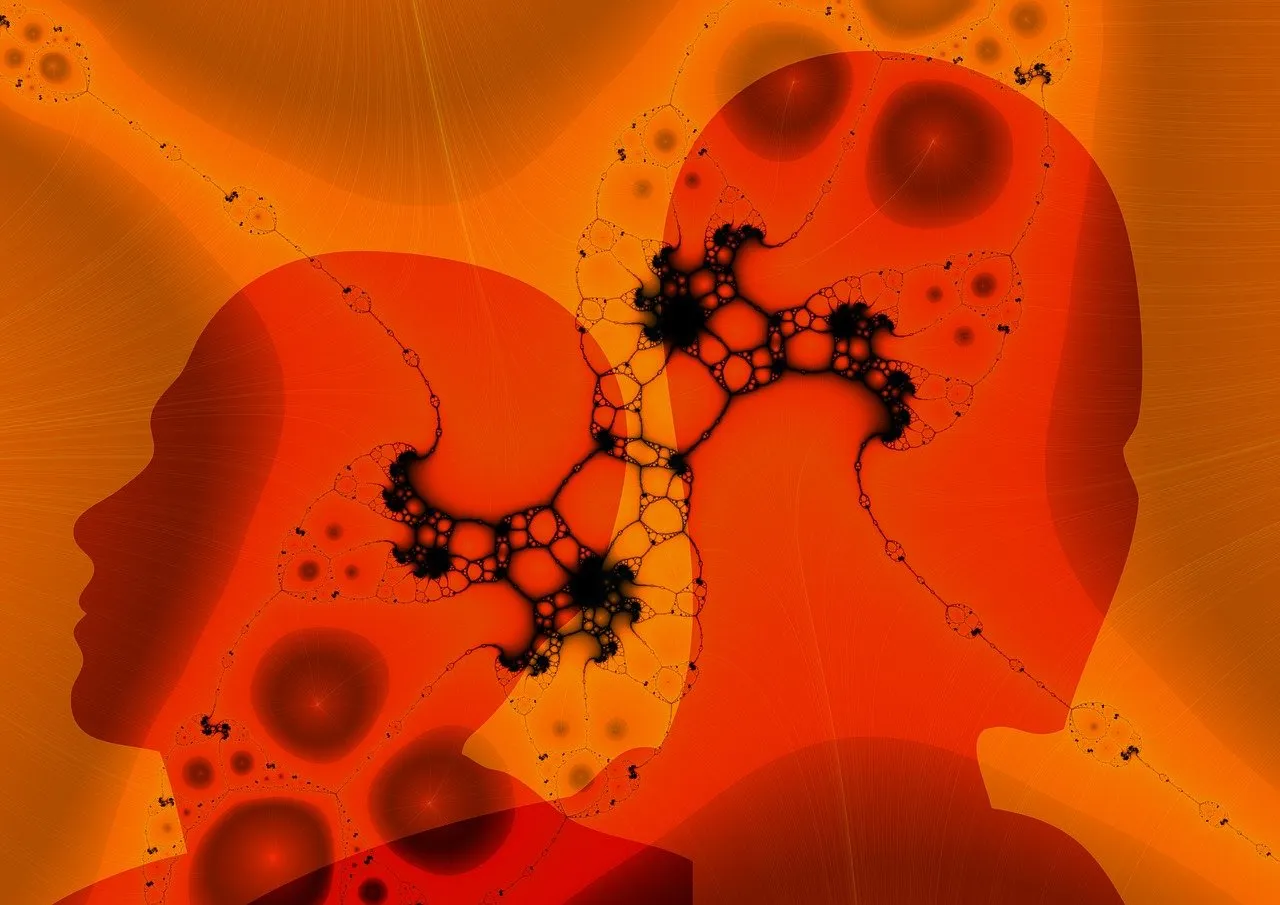How can physics teach us something about the nature of our consciousness?

Our conscious experience exists as an interpreter, filter, and acting agent when interacting with the physical world. While it might feel like we are in direct contact with the elements, we know from more close examination that we merely operate within an internal representation of them. This can be easily demonstrated with the sense of sight: Take the process of viewing a table through the window of someone's home. We do not actually see the table.
Instead, light which is reflected at various angles off the table travels and is distorted by the glass window and then further by the lenses of your eyes eventually hits the rods and cones at the back of our retina. From there, a complex web of horizontal, bipolar, amacrine, and ganglion cells re-organizes and packages the information before sending it off to the lateral geniculate nuclei (LGN). At the LGN, a multitude of complex mathematical functions take anatomical data into account with the visual information. Here, the information between your two eyes are integrated, signals are tagged with contextual information (such as the distance, position, and velocity of visual elements). After these computations are preformed, the data is sent to the primary visual cortex (area V1). In V1, basic meaning is derived from the tagged inputs such as the formation of a retinotopic map. Then the information is processed by the greater visual cortex (extrastriate areas V2, V3, V4, and V5). In these areas, a more detailed analysis of the visual information is conducted; now features like color, orientation, direction of motion, and object identification are derived. Only after this processing, when the information is sent out to the other lobes and regions of the brain to be integrated, does it likely form our seamless experience of sight. This entire mechanism leaves our visual experience susceptible to misinterpretation at many points and elucidates the fact that we only see a mere representation. Quite miraculous it is that such a complicated method of extrapolation and information manipulation could be developed by evolution.

So how could any of this be related to the purely physical aspects of our universe. It may seem far-fetched to claim that insights about the technical laws that govern quantum physics could provide understanding to the character of our selves. But, at the same time we have some intuition that there are underlying ways that our social interactions and arising social structures have some reflection of the underlying psychology of the people that make up said social structure. In the same way, we can recognize that our mental state is reliably based in a respective neurological state, which in turn is made up of electro-chemical-physiology and circuitry involving small processing units. We can follow this path of logic down to the mathematically represented core of existence. But with each jump there is clearly a missing portion of the picture within our current understanding of the cosmos; there are large unknowns in science today, but there is something to be said about how rapidly the scientific community is painting how we understand the universe.

In Gödel, Escher, Bach (1979), Douglas Hofstadter brilliantly explores emerging strange loops through looking at the logician, artist, and composer and their work. Through thinking about the emergence of consciousness and of logic contradictions, I have gained a profound sense of unity between physical and mental spaces, processes, and entities. One can see how distributed networks of individual nodes make up our bodies, our brains, our communities, the Internet, or blockchain technologies. These are entities, yet only exist as a sum of all of their parts across a specific medium.
If everything can seemingly be broken down into smaller and smaller units then what are the smallest units?
There is a problem with this question. Everything that we see, each of these units, and each of the systems that they make up, is being identified, defined, and observed by us. As we touched upon earlier, our perception is quite distinct from an objective truth. We can systematically study the world and study ourselves, but ultimately, we are observers of the universe.
The superposition principle states that the response of a system is the sum of each stimuli that it is composed of. Mathematical representations of a quantum state can be derived as a wave function which can be integrated with complex numbers to calculate the probability of an event.

We are evolved to see things having singular, well defined properties, such as position. Quantum mechanics goes against this intuition and states that there is in fact no "position," but rather there is a quantum state associated with the object to which we see a position. If you imagine a magnet and pretend that you could see the magnetic field associated with it, you would not say that the field only exists where the magnet itself appears to be, you would only say that is where it is most concentrated. Physicist Sean Carroll does a great job of explaining this concept during his appearance on Joe Rogans show. The actual quantum state of an electron is not just the position that you see it in when you observe it.
There are many interesting connections between the way that conscious systems arise and the psychical substrate upon which they are formed arise. Our ability for consciousness is a remarkable phenomenon about which we clearly understand very little. I am acutely aware that my knowledge of these topics is quite limited, so please help educate me on this topic, and be sure to redefine or expand on any concepts which I touched on.
Thanks so much for reading. Feedback is highly appreciated!
Recent Articles:
- How to Manifest your Intentions: The Philosophy and Neuroscience of Mindfulness Meditation
- What Really is a Memory? Bio-physical Representations of Memories, and Implanting Fake Memories on Command!
- Identity Politics is Eroding Public Discourse
Images: